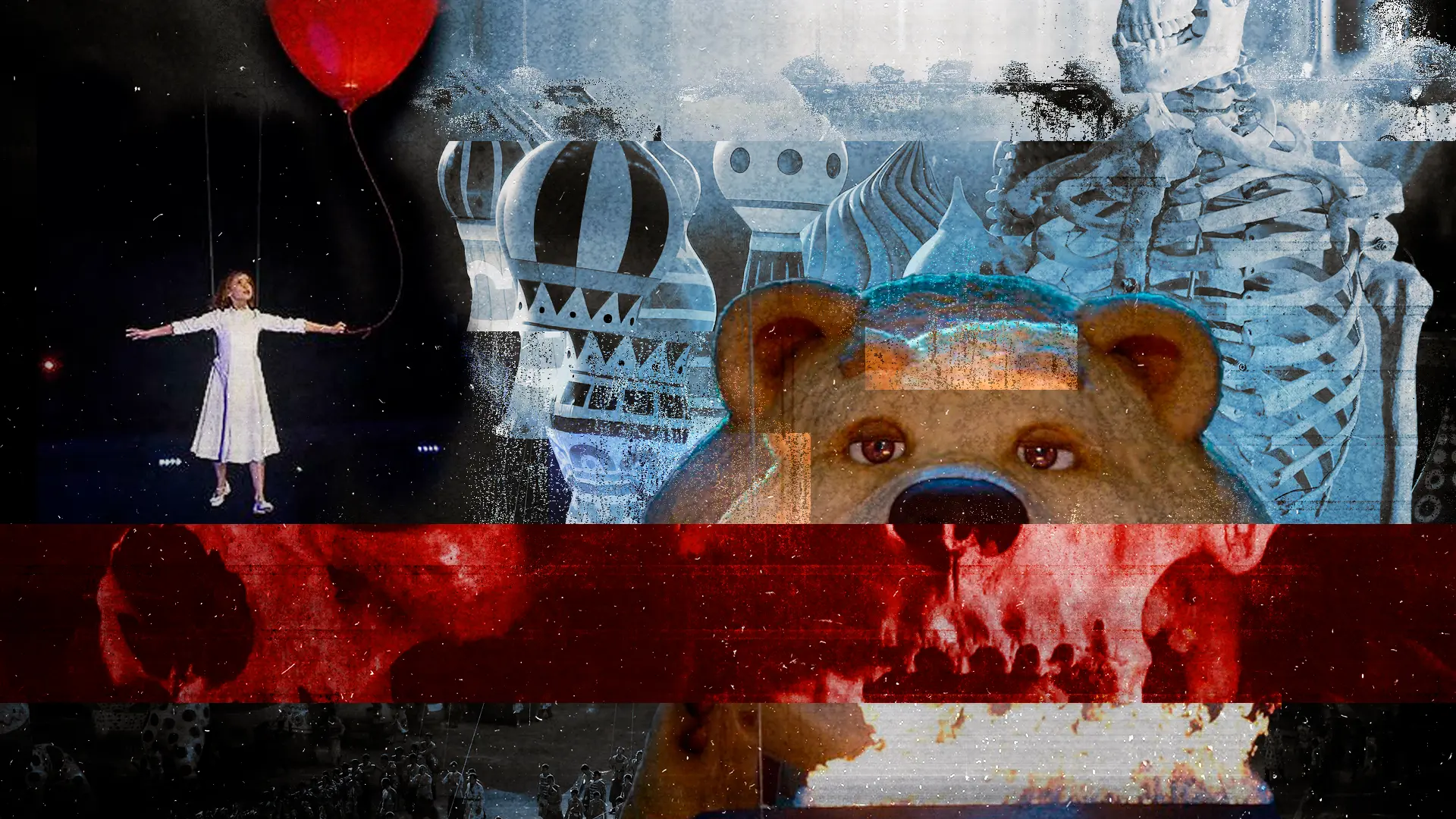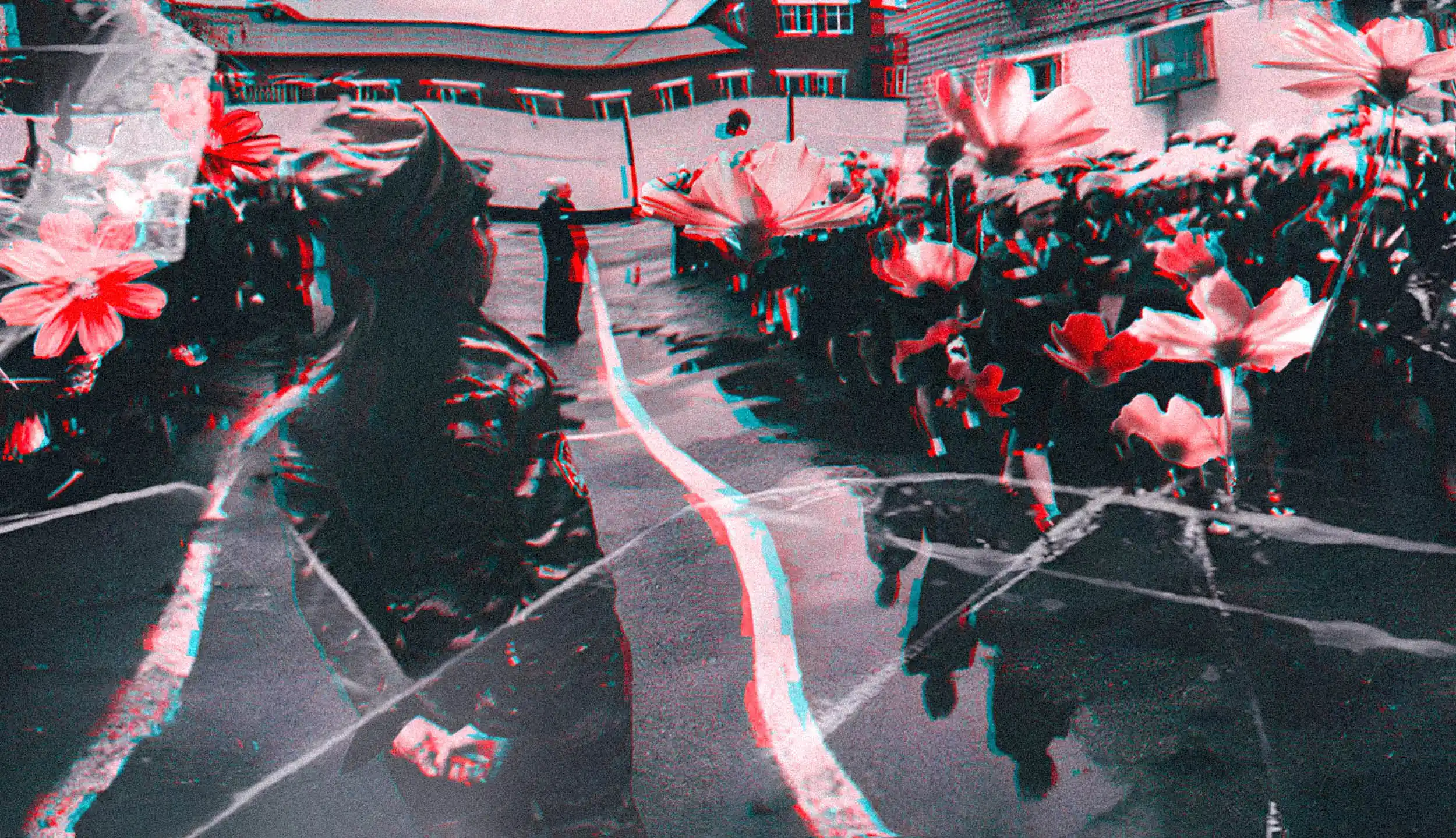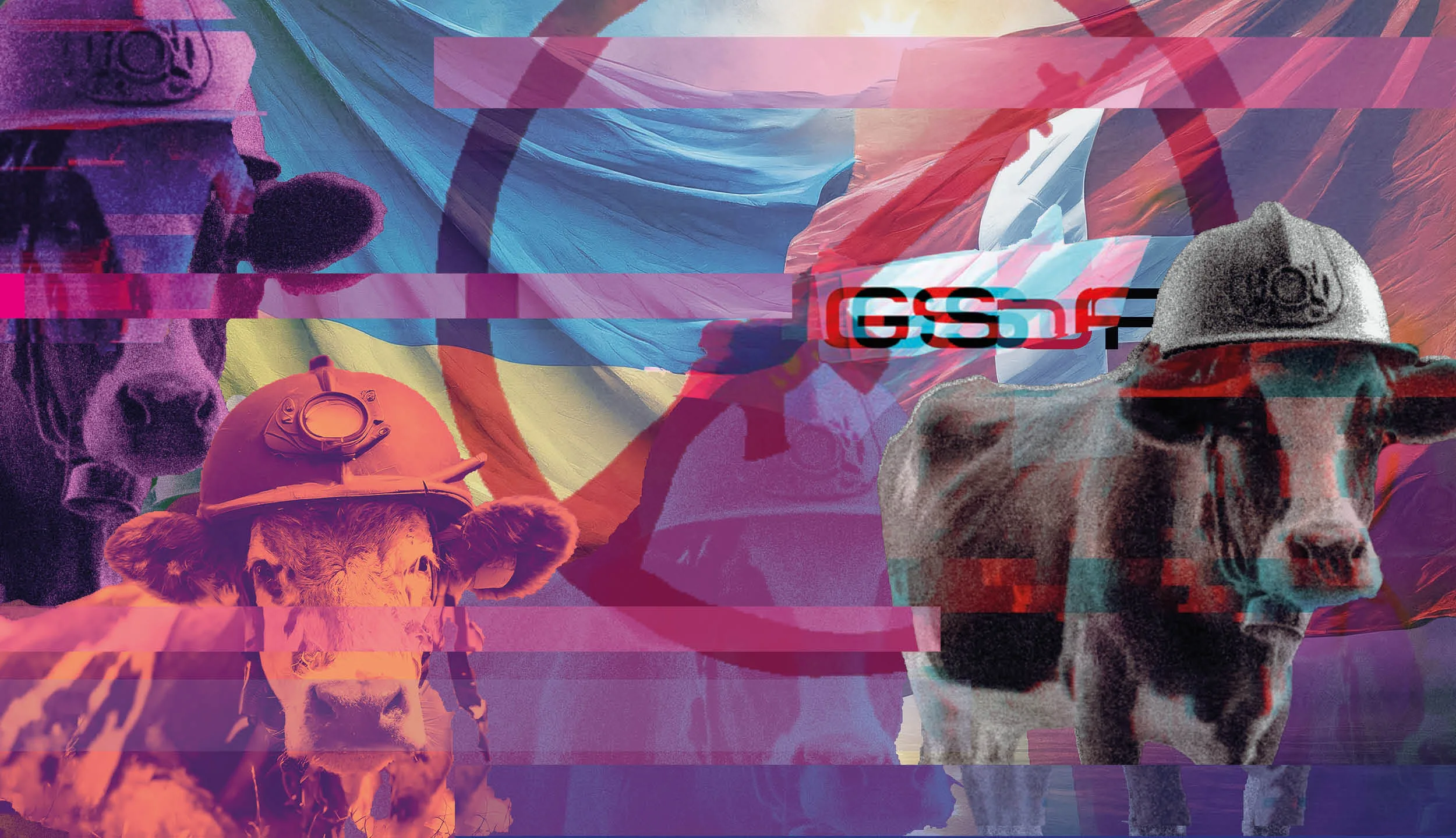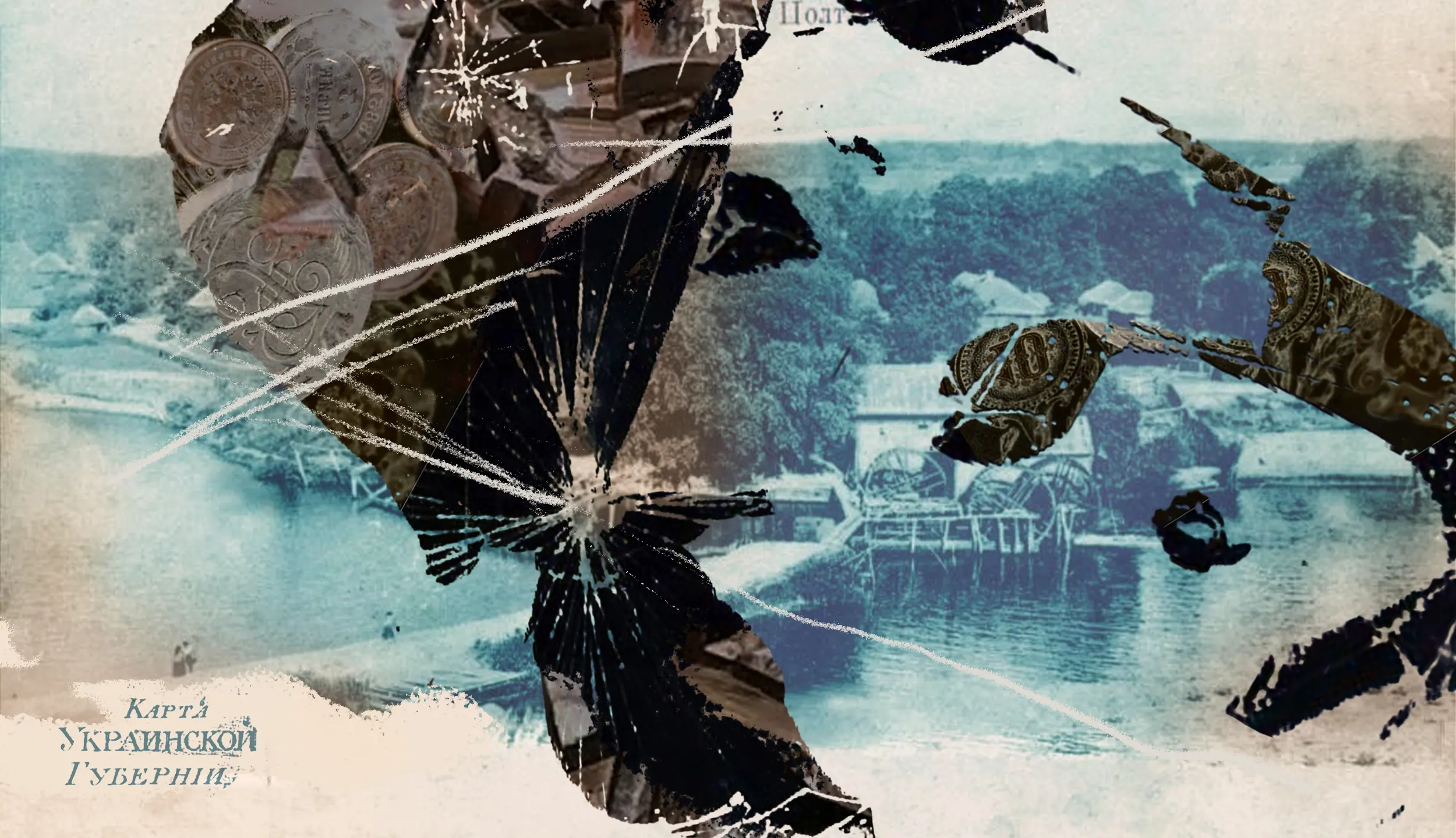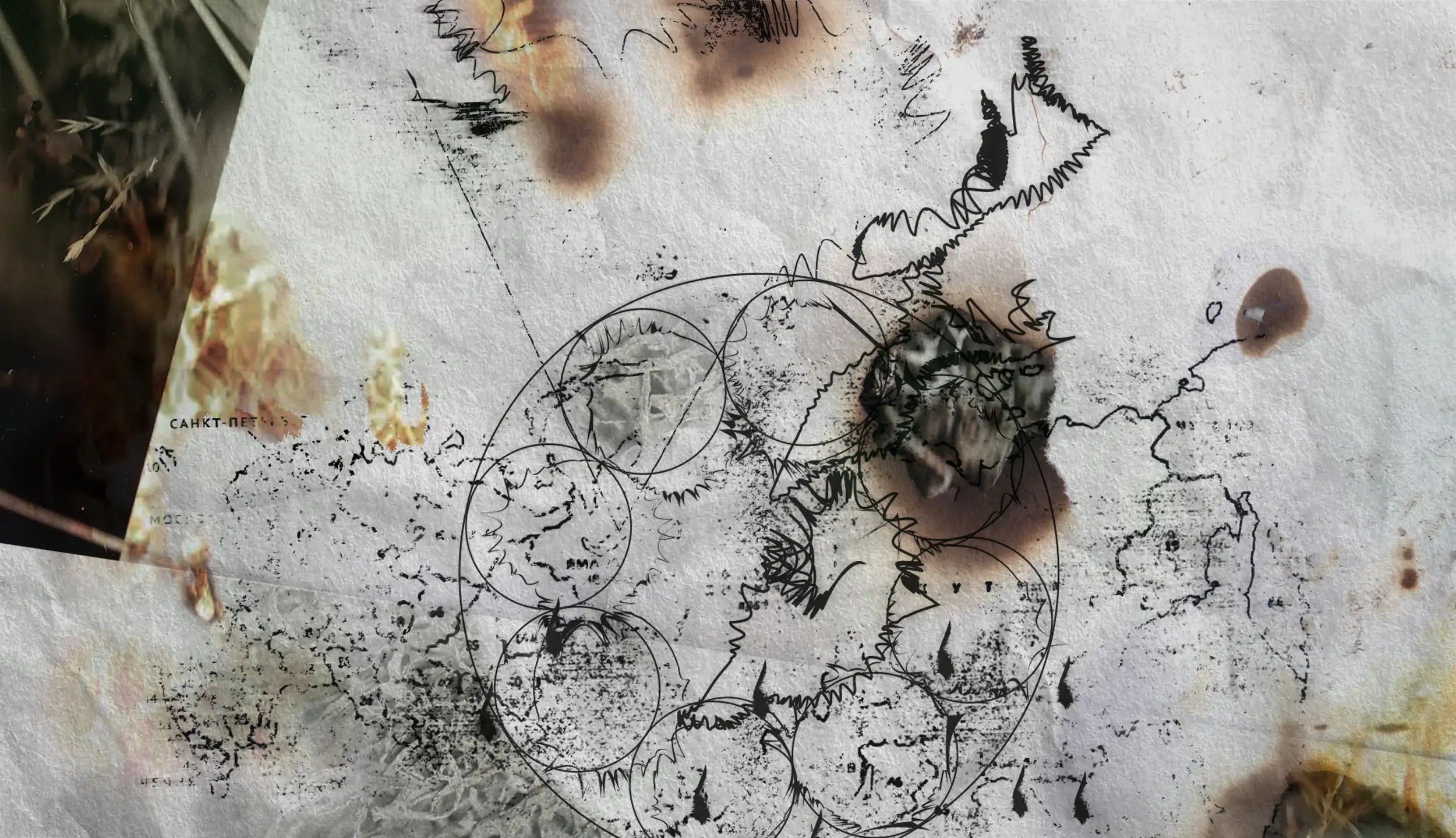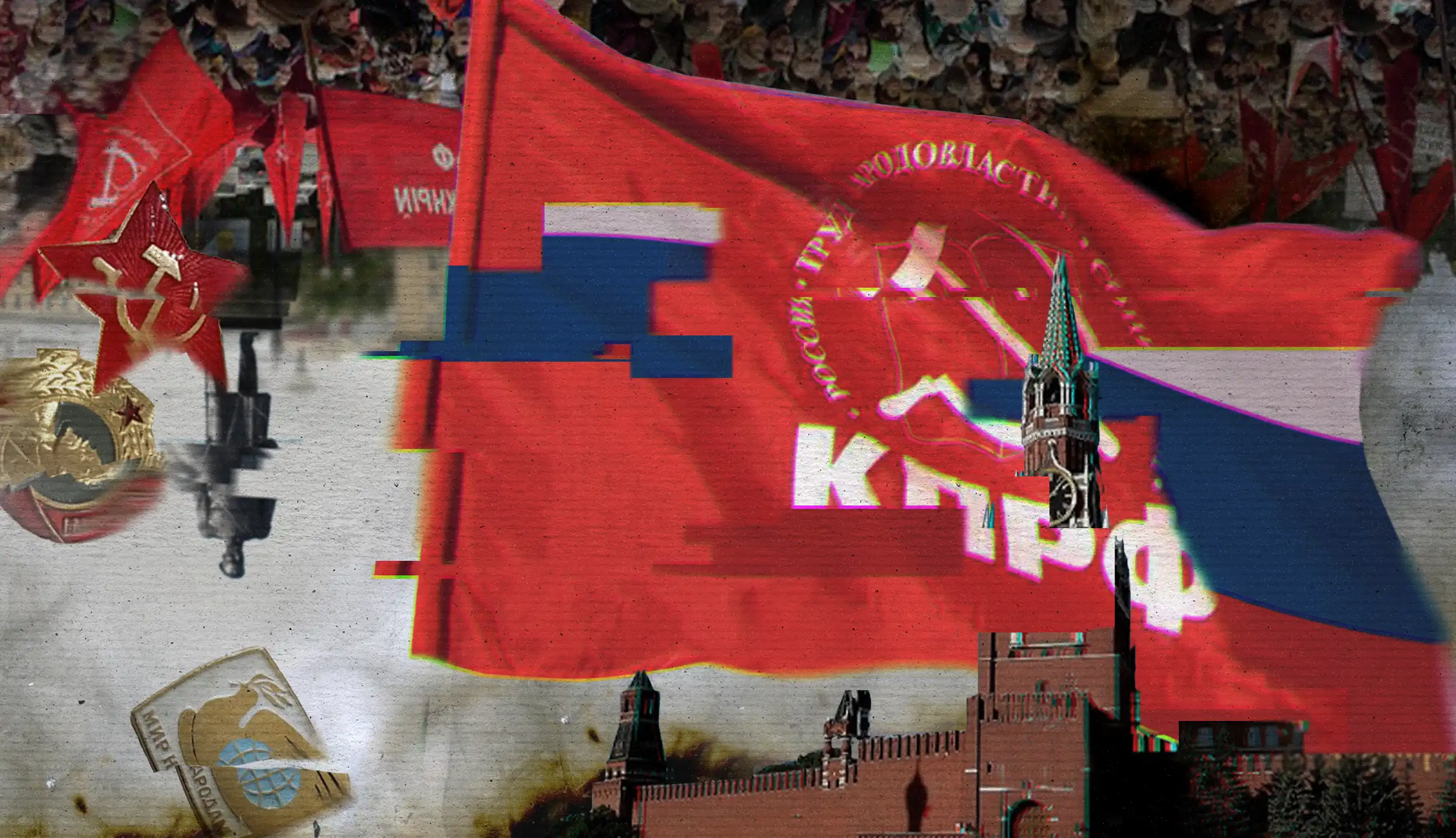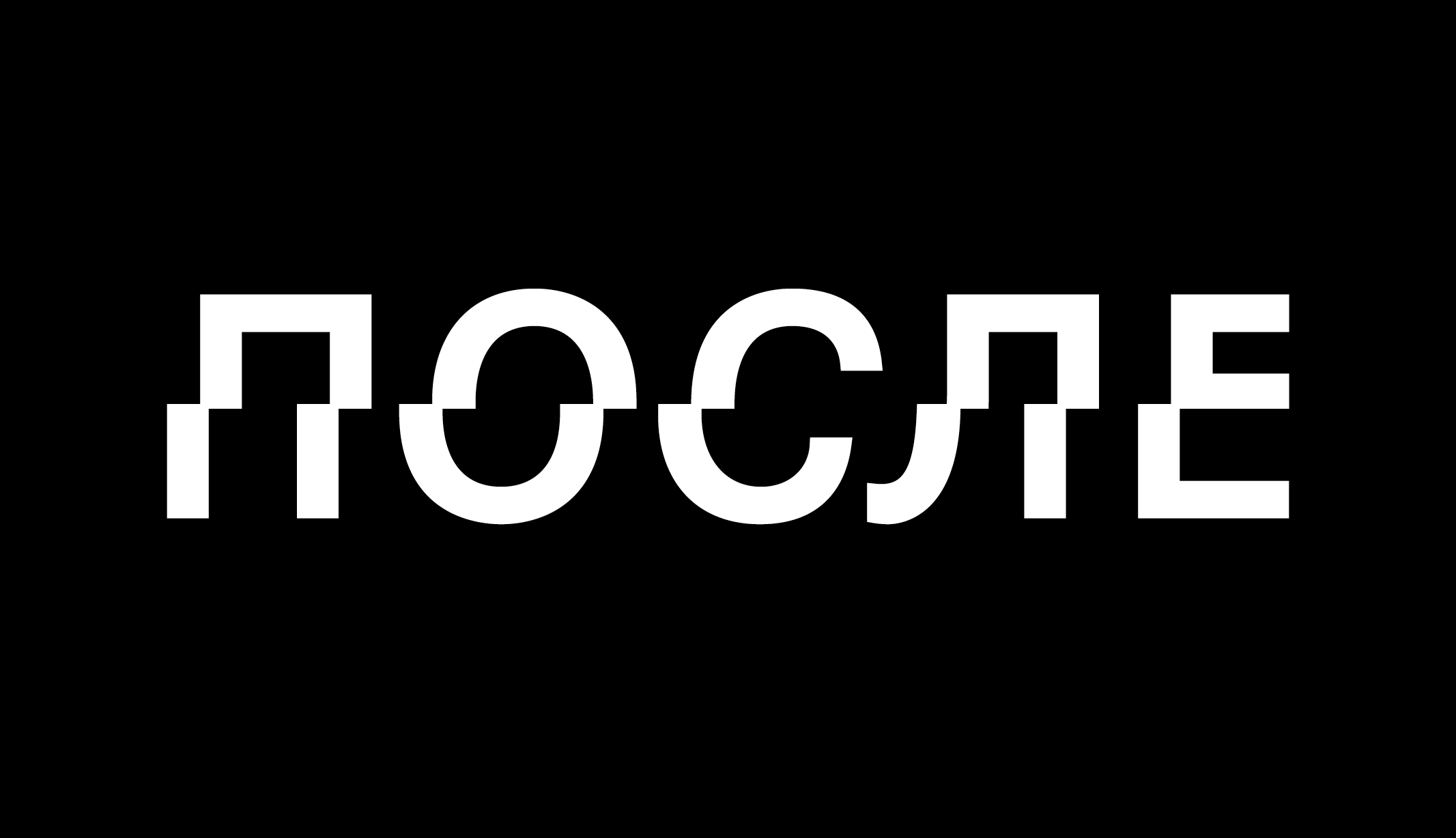Over the past decade, the Russian authorities have proven themselves to be conspicuously concerned about matters of culture. Officials, state managers and law enforcers have ever more eagerly opined on cultural practices, spiritual life, and morality — to everyone’s bewilderment. At first glance, their pronouncements seemed to be a bluff — little more than a clumsy attempt to conceal their interests in maintaining access to administrative and financial resources. Indeed, this fixation on the importance of Russian culture, which became more prominent in the years following 2014, was assumed to be just another elite ruse. However, fully developed by the time of the full-scale invasion of Ukraine, Russia’s cultural politics is today in full deployment for the country’s war of aggression and propaganda efforts.
As will be shown below, the identity of Russia’s autocratic regime, which juggles with ideologemes like “traditional values,” was constructed in defense of the country’s so-called cultural sovereignty. Putinism, which emerged from a collusion between the security forces (siloviki) and the oligarchs, at some point began to display an ostentatious — almost excessive — interest in the spirit of culture and cultural memory, and not without reason. The idea of cultural sovereignty cemented the authoritarian consensus, which, in its turn, facilitated the rise of Putin’s dictatorship. This consensus did not imply that various individuals or groups in power shared common political beliefs, nor that their interests had somehow been reconciled. Rather, it implied a tacit consent vis-à-vis the existence of an abstract morality — given to all, experienced by all, and impossible to comprehend, as it derives from the unfathomable and transhistorical depths of Russian culture. As recent decrees show, the struggle for a values-based cultural identity shores up Russia’s imperialist aggression in Ukraine and its confrontation with an imaginary West. But where did this idea of cultural sovereignty come from, and how did its defense turn into a full-scale offensive?
External sovereignty and uninterrupted freedom
The attempt to reach an ideological consensus from above, which in the 2010s (and especially after 2014) gradually became an imposition of meanings, emerged against the backdrop of a geopolitical ambition: to shake off Russia’s image as a resource appendage for the global economy — that is, to no longer be seen as a country totally hooked on oil and gas. In the mid-noughties, i.e. at the beginning of Putin’s second term in office, this was, indeed, exactly how the country was perceived in the eyes of both foreign politicians and its own citizens. Success in the global market, however, implied not only the trading of wares but also of ideas — ideas that would be compelling for the global and Russian consumer alike. All the while reaping the material benefits of its “resource curse”, the country’s leaders gradually recognized the need to fashion a meaningful image of contemporary Russia.
Years later, shortly after the occupation of Crimea in 2014, Republican Senator John McCain would hit the Russian authorities where it hurt most by calling Russia “a gas station masquerading as a country”. Republicans were already at that time concerned about this wayward “gas station” potentially invading Ukraine. As they claimed quite ruthlessly, invasion was a matter of cost-benefit analysis, which Putin then seemed to still be figuring out. There was a grain of truth in their assessment: there does seem to be a political connection between Russia’s military expansionism and its dependence on oil rents. However, this connection was established well before 2014 and reflected a desire to reshape the country’s role in the international arena: to stop acting as a servile resource supplier and to gradually prepare the country for renewed participation in the historical “great game”. Scattered statements about Russia’s singularity and its world historical mission were already being voiced in the mid-noughties — but few took them seriously enough. It is important, however, to recognize just how significant they would become for the cause of state-building in the era of mature Putinism.
The search for identity, then, had begun as early as the mid-noughties. It was then that the word “sovereignty” first entered the Kremlin’s active vocabulary — today this word pops up in all sorts of the official documents and propaganda materials. Vladislav Surkov, erstwhile deputy head of the presidential administration and a top political advisor, began promoting the term “sovereign democracy”. The coinage was supposed to stress the distinctive character of democratic politics in Russia, or democracy “with Russian characteristics”. Warning that in the course of globalization Russia could be reduced to a “pipeline security service”, Surkov called for the defense of her sovereignty and declared the latter nothing but “a political synonym for competitiveness”. The task was to locate this sovereignty and to assert it as a means of coexisting with — and possibly surpassing — Russia’s geopolitical rivals.
For Putin and Surkov, freedom and selfhood have not historically been bestowed on all contemporary states: as one of the select few with these prerogatives, it therefore befits Russia to determine the course of world politics alongside the other “great powers” (an outdated geopolitical term here suits the message). In his 2005 annual address to the Federal Assembly, Putin spoke of state independence as the source and guarantee of society’s freedom. He moreover identified sovereignty with freedom from domination — freedom from interference by foreign invaders (foreign companies included). Russia had fought to secure such independence for centuries and intended to carry on doing so at all costs. Later, the Ministry of Culture would adopt this theme and make use of it. For example, the former Minister of Culture Vladimir Medinsky would incessantly expound on the continuity of Russian sovereignty since the reign of Ivan III, when the country became fully independent of the Golden Horde. This vision of Russia’s uninterrupted sovereignty implied that only those countries which have not been conquered and defeated throughout modern history are truly sovereign. As we see today, the sway of this idea among the elites not only fed into the growing cult of power but unbridled “sovereign Russia”, priming her for her role as invader.
Internal sovereignty and the name of supreme power
Behind the Kremlin’s striving for sovereignty were not only its foreign policy interests but also internal motivations. The reality of the brutal competition of the 1990s was over, and by the mid-noughties Putin had built a top-down command structure (famously dubbed the “power vertical”) and divided the political space into zones of power. Not only did he distribute ranks and assets among those belonging to his inner circle, be they businessmen or former KGB officers; even more importantly, he circumscribed zones of influence and established a fragile balance between, on the one hand, the security forces (including the FSB, the Presidential Guard, and even informal criminal groups), and, on the other, the oligarchs at the helm of Russia’s corporations.
Later on, technocrats would also be allowed to enter the system. Ministers, officials, university executives and museum chief administrators — these were managers of a different kind who traded their loyalty for the opportunity to play big and take responsibility for the “modernization” of their respective fields. In fact, not all of them were wholly depoliticized from the outset. Some could even be considered non-parliamentary representatives of the so-called “systemic opposition”, who were ready to make political compromises for the sake of a chance to make changes from within. However, the systemic nature and language of Putin’s administration soon undermined their oppositional capacities.
Thus, Putin’s redistribution of power gave shape to new economic, security, and apparatus elites. Their point of convergence was the president himself. By relating to each of them and mediating their relations, Putin occupied the metaposition of a supreme ruler, corresponding to his place in the newly established political system: in a sovereign seat that towers above the three separated branches of power and links them. It is no coincidence that the word “sovereignty” appears in official rhetoric immediately after two key reforms of the early Putin era: the reform of the electoral and political system in 2004, as a result of which power in the country was centralized, and the monetization reform of social benefits in 2005, which eliminated one of the components of Soviet welfare architecture. Whereas the government’s political measures signalled the regime’s move towards autocracy, its new socio-economic policies were neo-liberal in essence.
This newly established position both within and above the political system vested the president with enormous power and supreme authority. On the one hand, it gave him the right to determine, in a strategic sense, the content of all state policies. On the other, it provided him with the opportunity and tools to coordinate both the state’s “powers” (its legislative, executive, and judicial branches) and the country’s social “forces” (the aforementioned groups of influence, such as the security forces, oligarchs and technocrats). The president was to combine the guiding role of a leader with the technical functions of a coordinator — such was the ticking mechanism of Putin’s regime.
Culture enters service
Thus, by the mid-noughties, against the backdrop of stable export revenues and an already established “power vertical”, the political regime was ready for its ideological articulation. Besides, there was a need to justify, even if only rhetorically and retrospectively, the reforms that had just been enforced, combining as they had an authoritarian-conservative impulse in governance and a liberal market impulse in the social sphere. Those in power, moreover, wanted to distinguish the country from other inhabitants of the global world or, to use Surkov’s analogy, to locate its competitive edge. In this way, Russia could consistently assert herself both in the international arena and domestically, cementing the two components of her sovereignty.
By the end of the noughties, mass consumerism was in full swing in Russia, with the construction of shopping and entertainment centers in cities and the expansion of retail chains. These displaced Soviet-era infrastructure, be it social (e.g., hospitals) or buildings connected with cultural public life (e.g., the once-ubiquitous “houses of culture”). It is indicative that a member of Nashi, the patriotic youth movement created by the presidential administration under Surkov’s supervision, voiced her support of Putin with the much-ridiculed exclamation: “We’ve all become better dressed.” It might seem plausible that Russia’s new identity could easily have been erected on the buttress of a growing consumer culture by translating consumer freedoms into a political language. However, this would have required a degree of dexterity and cunning. The idea itself was uncomfortably close to late Soviet popular fantasies of “the American way of life”, and relations between Russia and the US were meanwhile getting ever cooler against the backdrop of NATO expansion, and especially after the war in Iraq. Deducing a national idea from practices of consumption in this context was difficult. Far easier was to milk a familiar but long-neglected theme: the “great and mighty” Russian culture and language, in all its imperial splendor. This was an image that had endured during the Cold War era and was thus standard fare for anyone who had been through the system of Soviet schooling.
The identity that was to cohere with Russia’s sovereignty and express its political style presupposed a consensus among those who were expected to cultivate and promote it: officials, TV personalities, mass entertainers and public event organizers, their oligarch sponsors, and, of course, the public itself. At the same time, this identity was itself a means of achieving consensus among various groups and audiences. Such a consensus, however, was not the result of a pact or unification on the basis of common ideals but instead rested on a quasi-automatic agreement to delimit a “no man’s land”. That is, oppositional or simply heterogenous groups accepted those ideas and ideals that would not directly affect their positions; they could adhere to these ideas precisely because of their disinterest in them. In other words, Russia’s nascent identity called for a form of self-description that would be acceptable, albeit with reservations, to all because it would not touch their primary concerns.
This, then, is why and how the state pivoted to the lionization of Russian culture, seemingly admired the world over and an ostensible source of pride for every Russian citizen. This culture was at hand as yet another resource to extract and develop — a resource inherited from the country’s forebears. For it was perceived as an idea of culture, not as a collection of artifacts: it could be endlessly privatized and yet, at the same time, would touch no one’s economic and political interests directly. Anyone in the country could potentially identify with it, and indeed, any official or oligarch could rattle off something about her love for Russian literature or extol its greatness. Besides, few could contest the value of culture: the idea of its unquestionable importance had been taught at schools and propagated by the press, TV and radio to all Soviet children. Some of these children grew up and ended up at the helm of the Russian state. One way or another, culture, whatever was meant by this word, seemed to be a safe and a rich territory, which belonged to everyone but which nobody yet possessed.
This is how those in power discovered Russian culture as a territory with no clear-cut borders and yet little potential to become an object of conflict. They had only to clarify its role and define its meaning. Later, once the government had begun to formalize its cultural policies, conflicts would arise, primarily between the state and society. Cultural institutions were increasingly controlled, cultural projects tacitly banned or censored, and the forced glorification of so-called historical Russia with its heroes and victims became ever more obtrusive. Innocent and guileless Russian culture, so apparently risk-free, was being transformed into a springboard for the regime’s aggressive politics.
In the last decade, the Russian cultural sphere has undergone real mobilization from above. The Ministry of Culture has authorized and financially supported a great number of large-scale projects, primarily film production, arts, and mass festivals. This is particularly conspicuous when it comes to memorial culture: there has been an inflation of monumental sculptures, historical reconstructions, and theme parks focused on Russia’s military grandeur and historical figures. At the same time, state appointees have gradually entered the management of museums and educational institutions. And, although this period has also seen the proliferation of “progressive” contemporary art institutions, these too can be understood as part and parcel of the conservative mobilization wave. Such institutions tried their best to have their cake and eat it too: to sidestep suspicion from traditionalist state officials, to effectively spend the cash of their oligarch sponsors, and to appeal to a mass audience eager to consume a more sophisticated form of leisure. After 2012, contemporary and smart forms of entertainment, such as art museums and cultural festivals, played an important role in keeping the so-called “creative class” occupied. This latter was considered to have formed the social base of the 2011–12 protests, which were triggered by fraudulent elections but were in fact expressive of opposition to the uninterrupted power of Putin and Medvedev’s presidential tandem and a domesticated and servile parliament. After coming out to the squares with their imaginative slogans to no avail, Russia’s creative youth were to be sated with cultural leisure.
The 2014 Winter Olympics that were held in the southern city of Sochi were a stark example of cultural politics in service to the state. The night of the Olympics closing ceremony was February 23, when Russian special military forces were already arriving on the Crimean peninsula, signalling the beginning of its occupation. In fact, both the closing and the opening ceremonies were striking in the abundance and scope of their cultural references targeted specifically at a Western audience. It is worth describing the concept behind the ceremony — “Russia in the eyes of the West” — as it was developed by Konstantin Ernst, the chief propagandist and perennial CEO of Channel One.
The Olympics ceremony opens with the character of a teenage girl named Lyubov, who drifts through “dreams about Russia”. Her dreams — and the Olympics as such is doubtless a set of such dreams — begin with popular associations with Russia and Russian patrimony: “Khokhloma,” “Dostoevsky,” and, naturally, “Empire.” At the beginning of the closing ceremony, Lyubov appears with her little friends Yura and Valya. The two clearly resemble the pioneer cosmonauts Yuri Gagarin and Valentina Tereshkova, shown in their imaginary childhood, Russian culture having nurtured them in their youth before the cosmic feats of their adult years. The three children remain in the arena of the stadium for almost the entire show but they neither dance nor sing. Their role is nothing more than to play out their literal immersion in the spectacle. This latter is a collection of performances, each resembling a certain aspect of Russian culture, in swift succession. First come the ballet dancers, who play Anna Pavlova and Vaclav Nijinsky of Diaghilev’s Saisons Russes on an improvised theatre stage under a huge crystal chandelier. Then, a hundred librarians swirl around monumental portraits of Russian writers, while actors impersonate Chekhov and Tolstoy, pensive at their writing desks. Next, a circus tent opens up and hundreds of acrobats and jugglers turn somersaults, in reference to Russian puppet theatre and traditional fairs. Finally, a white bear, the Olympic mascot, blows out the Olympic flame and cries a blue tear. A ship flies above — a zeppelin designed as a Fabergé egg. No, this is not a satire about cultural stereotypes for export. This is a costly assemblage of stereotypes into a multimedia picture of the “Russian world”, which is intended to be sold abroad and to prompt the domestic audience to cry out of pride. There was, at that moment, however, a better reason for tears: just then Russian special forces in unmarked uniforms (nicknamed “polite people”) were landing on the Crimean peninsula to raid and usurp it.
Sovereign aggression: from defense to offense
Shortly before the first anniversary of the 2022 invasion of Ukraine, Putin amended Russia’s Decree on the Fundamentals of State Cultural Policy. The decree’s first version, adopted in 2014, had already pronounced that “great Russian culture,” along with the Russian language, played “a unifying role in the historical consciousness of the people”. Culture was defined, above all, as our “cultural and historical experience”. The emphasis was less on the existence of a great cultural canon that should be preserved but rather on a great and enduring love for this canon. At the same time, culture was endowed with a “social mission” to serve as “an instrument for transmitting a set of moral, ethical, and aesthetic values to new generations”. There’s nothing to see here, was the message, just the instrumentalization of historical experience.
The 2014 decree also stated that a number of unfriendly countries and organizations were undermining Russia’s cultural sovereignty. However, the document did not define cultural sovereignty as such. This would come only in the January 2023 amendment, as follows: cultural sovereignty implies the cultivation of socio-cultural factors that make possible the formation of the identity of the people and the state, sustaining their autonomy from external influences and protecting them from ideological and informational attacks. The decree also established a normative-legal link with the country’s National Security Strategy. First formalized in 2009, this strategy had also undergone changes in 2021. There was, at that moment, a pressing need for such changes: not only to support propaganda and increasingly stringent censorship measures but also the context of the newly amended Constitution of 2020. The new National Security Strategy notes that there are “alien ideals and values” being planted on Russian soil to destroy “the foundation of cultural sovereignty”.
The concept of “cultural sovereignty” itself appears to have been imported. At the end of the 1990s and beginning of the 2000s, it sporadically cropped up in the academic and non-academic press, at the intersection of two trends: a growing usage of the word “sovereignty” in a wider sense and the internationalization of cultural diversity politics. Different authors used the concept of “cultural sovereignty” to stress the importance of cultural autonomy but in respect to very different phenomena. For example, cultural sovereignty was the name for a new strategy that signified a shift from hard to soft power in a multipolar world. Alternatively, it was used to express the idea of the cultural autonomy of lands within a federal state (Kulturhoheit der Länder in Germany). Finally, the concept was often used in respect to small ethno-cultural communities, such as American Indians, whose culture needed protection from the cultural onslaught of larger or more powerful communities.
In political terms, the concept emerged as the opposite of cultural hegemony — the latter implying inclusion, a broad alliance of different social groups. Unlike hegemony, cultural sovereignty pointed to the importance of supporting minoritarian and local cultures (languages, beliefs, crafts, etc.) and expressed the need to protect sociocultural life from the totalizing tendencies of big politics — the vestiges of imperialism, nation-states, and the ideological confrontation of the Cold War. However, somewhere in the early 2000s, sovereignty, for all its recently acquired cultural meaning, was returned to statehood. Today it can even imply state support for national cultural production in unequal competition with the products (films, music, etc.) offered by major global suppliers.
In the Russian context, the term was first introduced by the pro-Kremlin political analyst Sergei Chernyakhovsky. He repeatedly insisted on the need to talk about sovereignty from a cultural perspective, since culture had become global and could now easily traverse natural and national boundaries. In terms of structural and technical reasons, these boundaries had become blurred thanks to the internet, the work of international organizations, and NATO’s expansion to the east. This is how, as Chernyakhovsky explained, Western cultural norms, attitudes and fashions had become transnational, seducing Russian (and not only) citizens and depriving them of a firm cultural ground under their feet. The Ministry of Culture readily embraced Chernyakhovsky’s idea, and the president’s speechwriters took the term “cultural sovereignty” on board. In 2017, the ad hoc Commission on Protecting State Sovereignty was created as part of the council of the Federal Assembly. It paid specific attention to cultural issues and, for example, drafted a law (already enforced) banning many independent educational activities — an indicative example of pre-war censorship.
However, the aims of cultural policy were not limited to the defense of cultural sovereignty. An exclusively defensive approach, as the aforementioned Commission had remarked five years ago, would have pushed the country into isolation. Contrary to a clear-cut insistence on everything that was distinctively Russian, state officials found it wrong to shut out the whole world. The task proved to be more ambitious: Russia’s goal in geopolitical cultural battles would be “not to shut out, but to influence” others. Not to defend but to attack. Thus the idea of cultural sovereignty, which once emerged as an alternative to cultural hegemony, had come full circle. In the Russian political discourse, the idea was turned inside out and then returned to a military-political understanding of culture. As time has shown, cultural sovereignty has become a part of, if not a requirement for, real war.
The political connection between Russia’s bellicosity and its culture reveals itself in the unexpected convergence of such areas as cultural politics and national security. This connection is most clearly exhibited in another document: the 2023 Decree on Traditional Values. Its significance lies less in its content per se than in where it is situated: among what are considered to be key strategic documents. Besides the aforementioned National Security Strategy, these include the Strategy for Countering Extremism, the Nationalities Policy Strategy [the ethnic relations policy], the Strategy for the Development of Information Society, and others. The preamble to the decree on values clearly states its purpose: to concretize the provisions of these strategic documents, which together define the path Russia is taking. “Traditional values” aside, the decree’s message revolves around confronting external and internal enemies seeking to destroy Russia. In the midst of the war against Ukraine, some statements look particularly cynical: the claim that military force is now increasingly being used in the world as a tool for resolving international conflicts, a statement on the importance of “saving the people,” and, most outrageously, the professed goal of strengthening Russia’s role in peacekeeping.
Only Vladislav Surkov could have succeeded in reconciling this latter goal with the apparently contradictory fact of Russia’s military agression. Exactly one week before the 2022 invasion of Ukraine, he published an article that was widely circulated in the Kremlin media but little discussed. In the article, he claimed that big geopolitical conflicts were on the horizon and confessed that a shift from soft power to armed conflict (what he calls “contact geopolitics”) was probable. Why need this shift occur and what did Putin’s Russia have to do with it? Surkov’s point was that Russia, unlike other players in the geopolitical game, was neither “lazy” nor “afraid”. Besides, Russia felt “cramped and sad and uncomfortable” within the established borders of a “filthy world”. And Russia, Surkov concluded, was obviously in favor of peace — not a “filthy” peace, though; a “right” one. Quite indicative here was his play with the Russian word “мир”, which signifies both world and peace at the same time.
The idea, then, of Russian culture being under threat lubricated the government’s legitimization of its military aggression. This is why, in the Kremlin’s rhetoric, the launch of the full-scale invasion of Ukraine was nothing but a forced and preventive strike against “geopolitical enemies”, including those who had “attacked” the territory of culture and seduced Russia’s former allies with their alien cultural norms. This vision in itself is offensive enough. Only the political genesis of this vision is even more so. The Kremlin’s turn to culture, and the cultural sovereignty it constructed, was based, as if by mistake, on two contradictory ideas: an older idea of a large, unified, and aggressive statehood and a newer post-Cold War idea of the primacy of sociocultural differences. This explosive synthesis suited Putin’s regime, one that relies simultaneously on one-man rule and neo-liberal competition.
This is how Russia’s culture, in Putinism, came to be understood as something inherited — a commodity that could both be sold to the foreign consumer as a curio and offered to the Russian consumer as an object of affection. Cultural works or their meanings were not in themselves enough to serve as a political tool: it was the blind love for culture as a set of common family heirlooms that counted. Cherishing and fighting over them is not shameful — it is morally respected. This is how the Russian government’s sentimental affect for culture turned into sentimental moralization, and rudeness into cruelty, giving rise to ideological extravagances like “traditional values”, which must be defended with arms. Behind the sovereignty of Putin’s state lies sheer force, searching for its ancestral origins, and an abstract morality stemming from historical and cultural depths. Behind it there is a vague sense of its “great” — special, vast, and incomprehensible — culture. This vague sense — and nothing but this sense — came to be the foundation for the moral right to define what is “filthy” and what is not. And for when one should understand war as peace and peace as war.

